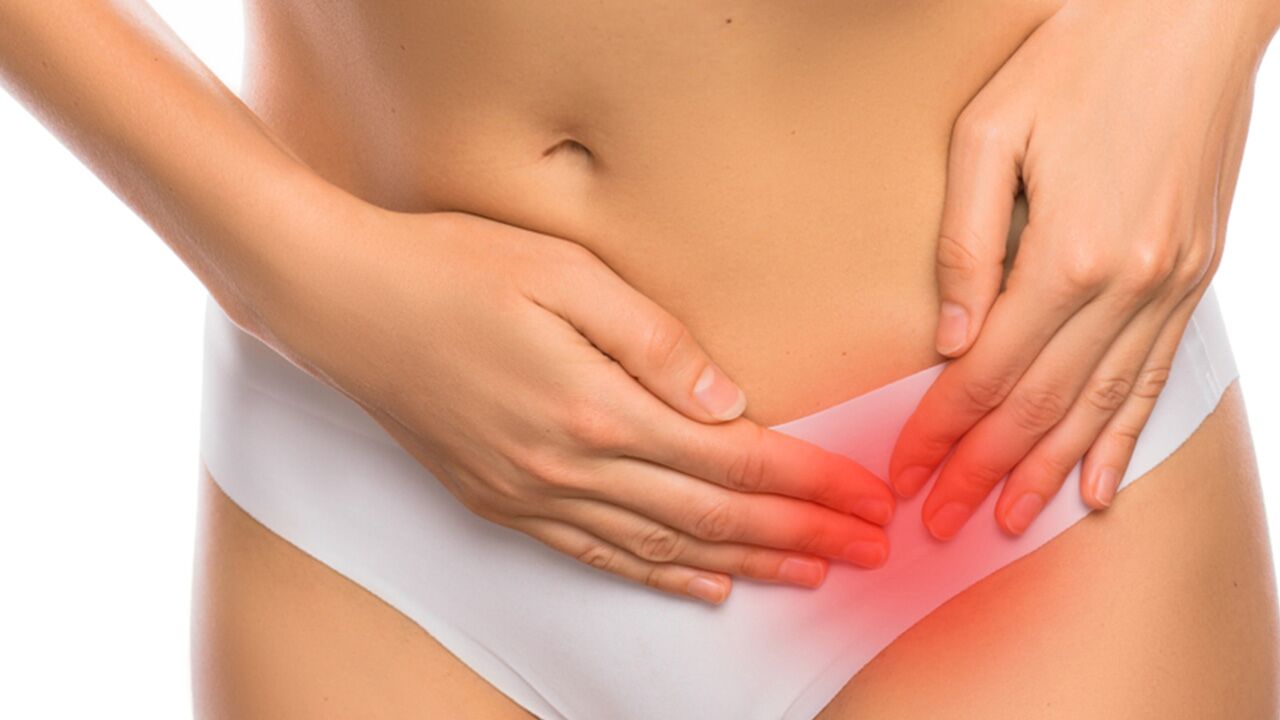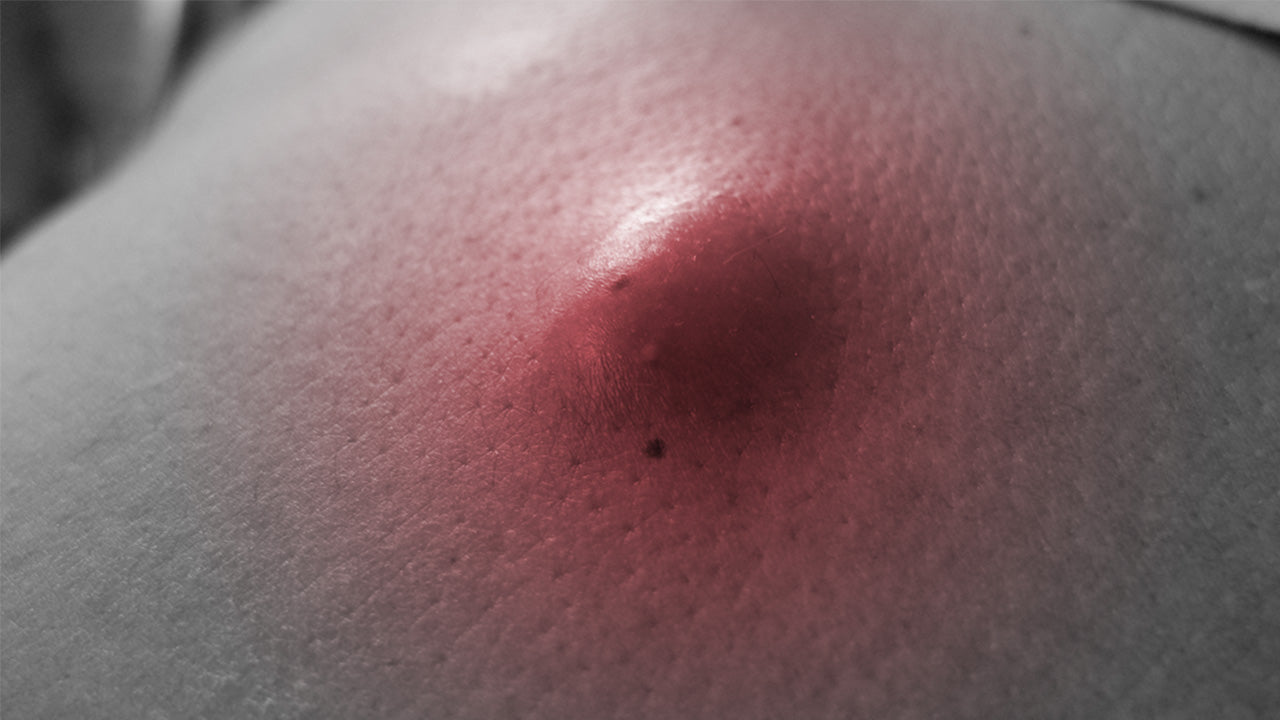What You Need to Know About Ovarian Cysts: Causes, Symptoms and Treatment
 By: by Amino Science
By: by Amino Science

Any woman who’s ever had a symptomatic ovarian cyst can attest to the sharp or dull ache in the lower abdomen these fluid-filled sacs can cause. Ovarian cysts are also quite common—but that doesn’t mean they can’t disrupt your life. So in case you’ve ever wondered what causes ovarian cysts and what you can do about them, we’re here to share with you everything you need to know about these usually harmless but sometimes painful phenomena.
Causes and Types of Ovarian Cysts
The causes of ovarian cysts are almost as varied as the types of cysts themselves, but the most common causes include:
- Menstrual cycle
- Endometriosis
- Pregnancy
- Polycystic ovary syndrome
- Pelvic infections
Menstrual Cycle
Once a young woman starts ovulating, she’s at risk of developing ovarian cysts. In fact, according to the Mayo Clinic, many women have ovarian cysts at some point during their lives, and the majority form as part of a woman’s menstrual cycle.
Every month, the ovaries produce follicles, which are fluid-filled sacs that produce estrogen and progesterone and are responsible for releasing an egg during ovulation. Even though several follicles develop each month, only one reaches maturity and releases an egg. The remaining follicles then disintegrate. However, if a follicle continues to grow, a cyst can develop.
These types of cysts are called functional cysts and are the most common type of ovarian cyst. Functional cysts can be further broken down into two types:
- Follicular cysts
- Corpus luteum cysts
Follicular cysts result when a follicle fails to rupture and release the mature egg and instead continues to grow until a cyst is formed. By contrast, corpus luteum cysts occur when the follicle is successful in releasing its egg but fails to shrink, instead resealing itself and accumulating fluid.
Functional cysts generally have no symptoms and disappear within several menstrual periods. However, these cysts can sometimes become quite large and rupture or cause the ovary to twist on its supporting ligaments.
This twisting, or ovarian torsion, cuts off the blood supply to the ovary—and sometimes the fallopian tube—resulting in severe pain. Although the occurrence of ovarian torsion is rare, it’s considered a medical emergency that must be treated surgically in order to save the ovary.
Interestingly, while birth control pills are sometimes recommended as treatment for functional cysts, oral contraceptives appear to be of no benefit in shrinking them. And intrauterine devices, or IUDs, are known to actually cause ovarian cysts in some women.
Endometriosis
Endometriosis is an often painful condition that occurs when the uterine lining, or endometrium, begins to grow outside the uterus. When this endometrial lining attaches itself to an ovary, a type of cyst called an endometrioma may form. These so-called chocolate cysts, which are filled with menstrual blood and endometrial tissue, can cause chronic pelvic pain and lead to fertility issues.
Pregnancy
When a woman becomes pregnant, it’s normal for her body to produce what’s called the “cyst of pregnancy.” This is actually a corpus luteum cyst, and it helps prevent miscarriage by producing progesterone. However, sometimes these cysts fail to disappear and instead remain on the ovary throughout the pregnancy.
Polycystic Ovary Syndrome
Polycystic ovary syndrome is a hormonal disorder that causes infrequent or prolonged periods. The condition can lead to enlargement of the ovaries due to failure of the follicles to release their eggs and subsequent development of numerous small cysts.
Pelvic Infections
Certain severe pelvic infections, such as chlamydia, have the ability to spread to the ovaries and cause cysts.
Dermoid Cysts and Cystadenomas
In addition to the functional ovarian cysts and endometriomas, there are two other types of ovarian cysts that don’t easily fall into the above categories—mainly because they contain features of both cysts and tumors. These hybrid creatures may be referred to variously as cysts, tumors, or even cystic tumors and are the:
- Dermoid cysts
- Cystadenomas
Dermoid cysts are bizarre, generally benign cystic tumors that develop from embryonic cells and may contain tissues such as skin, hair, and teeth. These types of cysts are also known as teratomas—a fitting name that comes from the Greek word for “monster”—and are present at birth. However, they grow so slowly that they’re usually not discovered until they become large enough to cause pain.
Like dermoid cysts, cystadenomas are also predominantly benign cystic tumors and can grow to great size. However, cystadenomas arise from the surface epithelium of the ovary and are usually filled with watery or mucus-like material.

Symptoms of Ovarian Cysts
As already discussed, ovarian cysts often don’t cause symptoms, so women may not even be aware they have one. However, if a cyst becomes large or ruptures, symptoms will likely appear. Some of the more common symptoms of an ovarian cyst include:
- Sharp or dull pelvic pain that occurs on the side of the cyst
- Abdominal fullness
- Bloating
- Breast tenderness
- Painful intercourse
- Frequent urination
- Low back and thigh pain
Diagnosing Ovarian Cysts
If you’re experiencing symptoms that suggest an ovarian cyst, your health care provider may choose to perform a pelvic exam. And if swelling is detected on one of your ovaries, additional tests may be ordered to further identify the type of cyst and whether it requires treatment. Tests that may be ordered include:
- Pregnancy test: In women of childbearing age, a pregnancy test may be performed to assess whether a corpus luteum cyst is the culprit.
- Pelvic ultrasound: This test uses sound waves to image the uterus and ovaries to determine the size, shape, and location of the cyst and whether it’s solid, fluid-filled, or a mixture of the two.
- Magnetic resonance imaging (MRI): If a pelvic ultrasound is found to be nondiagnostic, an MRI may be ordered. This test uses large magnets to generate an image of the area and is capable of much more detail than an ultrasound.
- Blood tests: If the cyst is found to be partially solid, a cancer antigen 125 (CA-125) test may be performed, as women with ovarian cancer—especially those who are past menopause—typically have higher amounts of CA-125 in their blood.
- Laparoscopy: In cases where surgery is warranted, a lighted instrument called a laparoscope may be inserted into the abdomen via a small incision to remove the cyst.
Complications of Ovarian Cysts
Signs of a possible complication from an ovarian cyst include sudden and severe abdominal or pelvic pain accompanied by fever or vomiting.
Sudden pain accompanied by blood loss may be a sign of a ruptured cyst, while pain accompanied by nausea and vomiting could indicate ovarian torsion. Either situation indicates a possible medical emergency and should be evaluated as soon as possible.
In addition, some ovarian cysts may become cancerous, especially those that develop after menopause. Fortunately, however, ovarian cysts rarely lead to ovarian cancer.
Treating Ovarian Cysts
Treatment of ovarian cysts typically depends on a woman’s age and symptoms as well as the size and type of the cyst. For example, in women with small, fluid-filled cysts and no symptoms, watchful waiting and follow-up ultrasounds may be recommended to see if the cyst goes away on its own or changes in size.
In addition, while birth control pills haven’t been shown to shrink existing ovarian cysts, contraceptives may be recommended to help prevent new cysts in women who’ve had prior cysts.
In women experiencing mild abdominal pain that doesn’t require surgery, supportive management may include:
- Nonsteroidal anti-inflammatory drugs (NSAIDs)
- Natural anti-inflammatories, such as ginger and turmeric
- Heating pads
- Epsom salt baths
One study also showed that acupuncture may be of benefit in women with ovarian cysts. And essential amino acids can help subdue the inflammation caused by ovarian cysts.
However, if a cyst continues to grow or is causing pain or already quite large, or has ruptured or resulted in torsion, surgery will need to be performed. In many cases, an ovarian cystectomy to remove the cyst but leave the ovary can be performed, while in other cases, an oophorectomy may be needed to remove the entire ovary.
And in women whose ovarian cysts have been determined to be cancerous, a total hysterectomy with radiation or chemotherapy may be recommended.
If you’re currently suffering from the pain of ovarian cysts and supportive management hasn’t worked for you, be sure to speak with your health care provider about further treatment options.

Up to 25% off Amino
Shop NowTAGS: conditions
Join the Community
Comments (0)
Most Craveable Recipes




 833-264-6620
833-264-6620



















